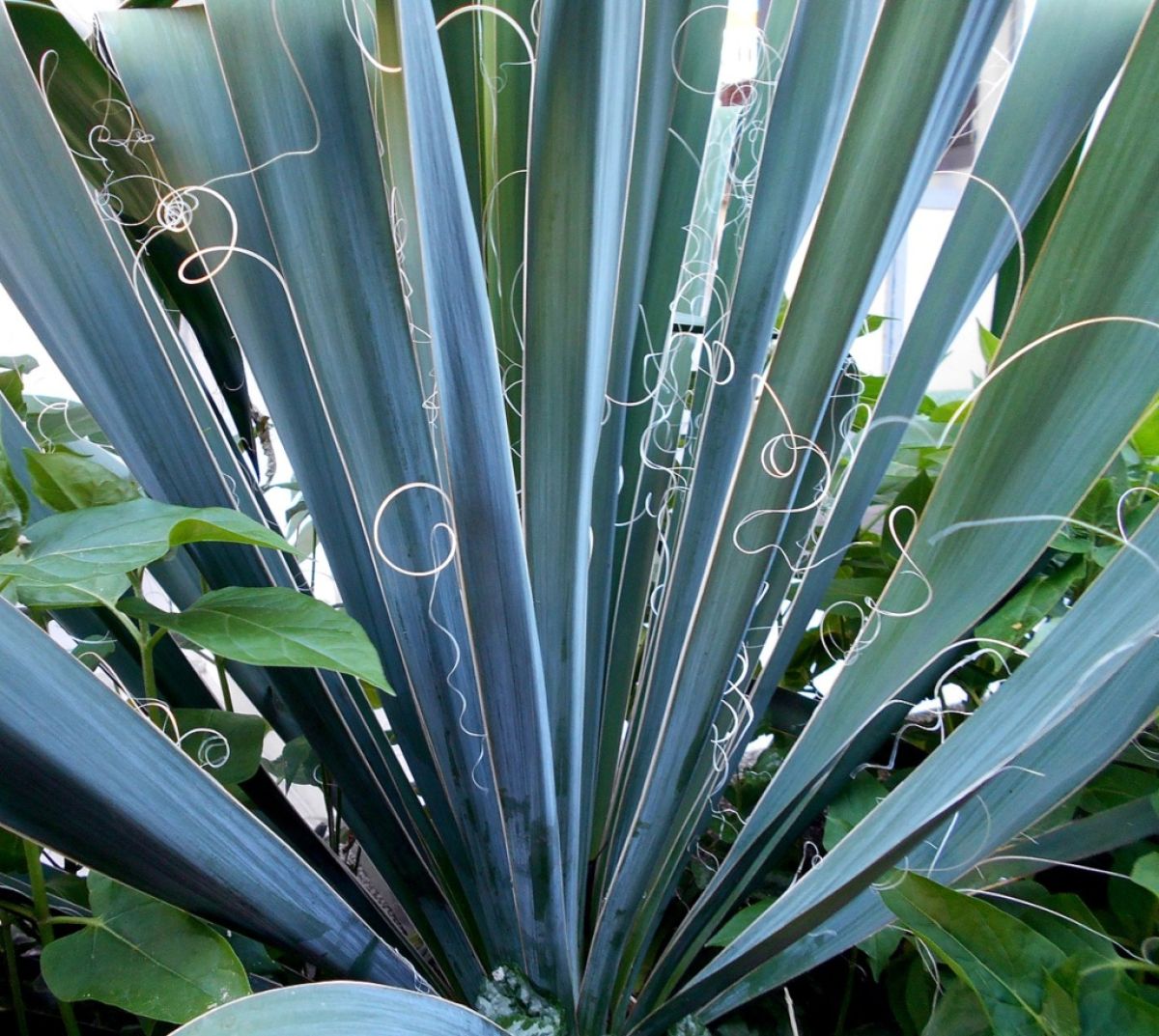
Yucca filamentosa, leaves with filaments. (Milica Buha, Wikimedia Commons)
Experts suggest that in order to have four-season appeal, a garden needs one third of the plantings to be evergreen. But, evergreens that carry a garden through ice and snow are not the only candidates to create architectural form in our plantings.
Think about the showy allium spheres that enhance our late spring gardens. The bulbs are planted in the fall and are likely to increase over time, as daffodils do. They are ornamental members of the onion family, deer proof, with many bloom sizes in lovely subtle colors.
Acanthus shrubs have fine architectural foliage that inspired ancient Greek architects who used the leaves as models for those on their Corinthian columns.
Yucca plants, surprisingly, are members of the lily family and hail from Mexico, and they look striking as punctuation plants in a garden.
Foxtail lilies are also statuesque, and they like good drainage and sun in order to flower majestically in early summer.
Daturas, commonly known as angel's trumpets are exotic-and poisonous-with large, scented blooms. In cold climates, they are annuals but may self-seed.
In shade, Dicentra, known as bleeding heart, has lovely blue-green leaves and delicately arching stems of elegant pink or white blooms.
There are many easily grown euphorbias, such as E. polychroma with acid-green blooms. However, euphorbias can be rampant spreaders.
Verbascum, frittalaria, and hollyhock, as well as many tall grasses are also statuesque.









